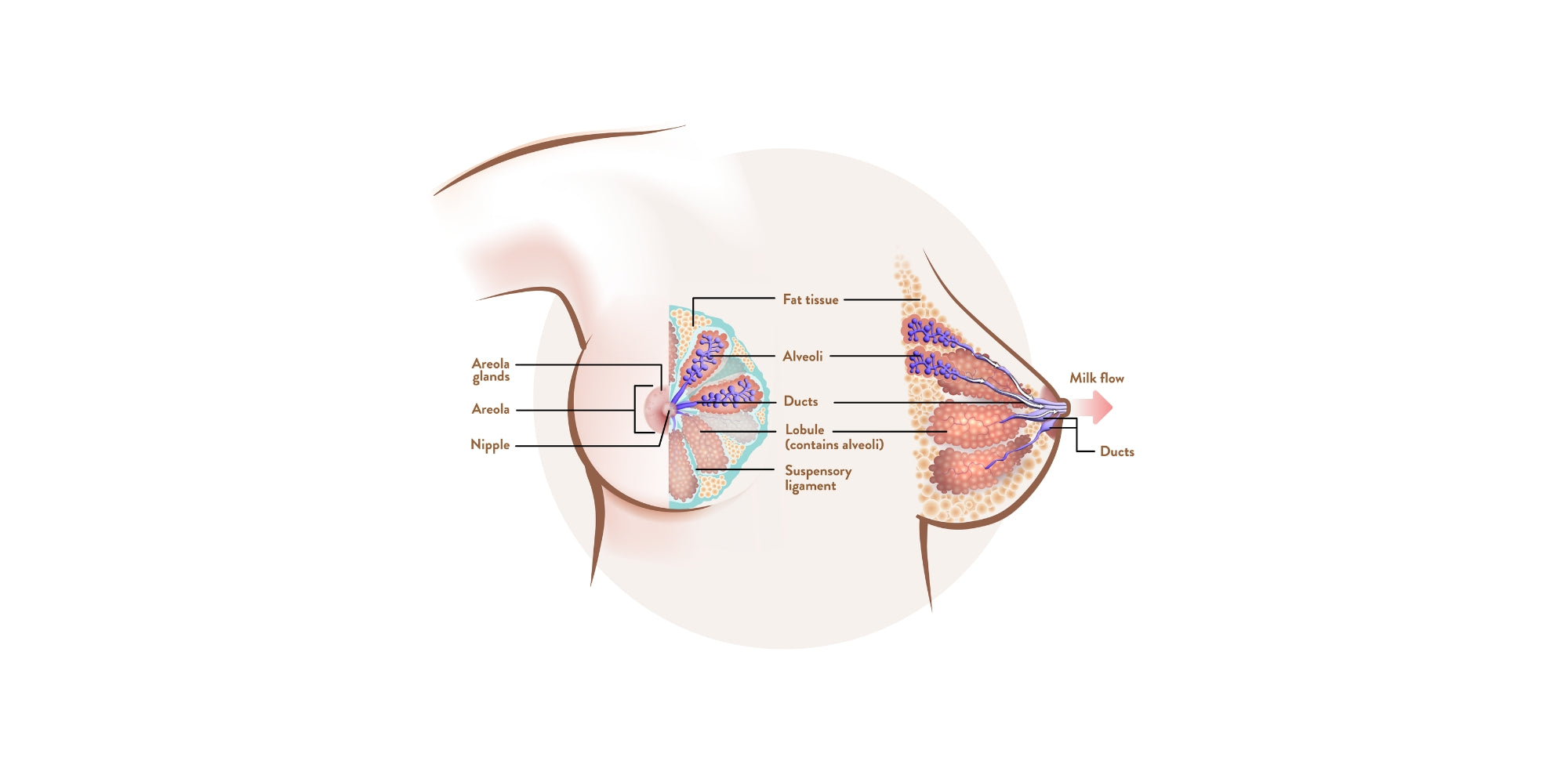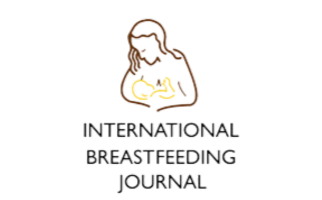
“Am I making enough milk for my baby?” Find out how to identify the signs of low milk supply, as well as what causes it and how you can try to boost it.
What are the signs of low milk supply?
We know it can be incredibly stressful to think your baby isn’t getting enough milk. Worries about low milk supply are very common among breastfeeding mamas, especially in the early days and weeks. One Western Australian study showed that in the first three weeks after birth, 44% of mamas thought they had low milk supply. But the good news is that most mamas do, in fact, produce enough milk to feed their baby. So, how can you tell whether your baby is getting enough?
- Have a look at your baby’s nappies. After the first five days, an exclusively breastfed baby usually produces at least five wet nappies every twenty-four hours. Their wee should be colourless or pale yellow and shouldn’t smell. (Dark-coloured, smelly wee can be a sign that they’re not getting enough milk.) During their first six to eight weeks, breastfed babies usually poo three (or more) very soft poos a day. As they get older, they tend to poo less often. As a general rule, what goes in must come out, and even though the poos may become less frequent after the first six to eight weeks, expect them to get bigger. Get ready for the clean-up when the poo does eventually come!
- Check out your baby’s growth signs. Each baby is unique and will grow at their own pace, but if your baby is gaining the right amount of weight (after the initial weight loss that happens soon after birth), their length and head circumference are increasing, they have a healthy skin colour and muscle tone, and they’re meeting developmental milestones, there’s every chance they’re getting enough milk.
- Observe your baby’s behaviour. A baby who is getting enough milk will usually be alert and have some reasonably content times between feeds. As trying as it can be for us mamas, fussiness, cluster feeding, and crying are all normal baby behaviour and not necessarily a sign of low milk supply. Let’s dig a little deeper into this because we know it’s a hot topic for a lot of new mamas.
Mamas often worry that they have low milk supply because their baby wants to feed all the time. But frequent feeding is not always a sign of low milk supply. There are many reasons why a baby might want to feed a lot. Breastmilk is very easily digested, and young babies only have very small stomachs, so they feed little and often. It’s normal for a young baby to feed between eight and twelve times in a twenty-four hour period and most babies will wake to feed overnight every three hours for the first couple of months. Remember, babies will want to feed when they’re thirsty as well as hungry. And just like adults, some days your baby will simply be hungrier or thirstier than others. Babies also seek out the breast for comfort, warmth and familiarity – sometimes, they just want to be close to their mama. Naww!
Breasts that feel empty are also not always a sign of low milk supply. Especially after the first six to twelve weeks, empty-feeling breasts are completely normal. As your breasts adjust to making the right amount of milk for your baby, they will feel softer and less full. But they’re never truly empty – as soon as your baby takes the milk from the breast, your body begins making more for the next feed.
If you notice that your baby doesn’t engage with and look at you, isn’t alert, isn’t reaching developmental milestones and doesn’t have contented periods between feeds, it may mean they are dehydrated. This might be because you have low milk supply, or it could be that your baby needs to feed more often. Or, these signs might be caused by something else altogether. That’s why, if you suspect you have low milk supply, we recommend you talk to a lactation consultant, midwife or GP.
What causes low milk supply?
The amount of breast milk your body makes is dictated by how much your baby demands. So, if your baby isn’t taking enough milk from your breasts, your breasts will make less of it. Attachment problems can mean your baby doesn’t drain the breast thoroughly (and they can also mean sore nipples!). This can lead to a reduction in milk supply. Your supply can also drop if your baby doesn’t feed effectively. Not feeding frequently enough or reducing feeds (because you’re using top-up formula feeds, for example) can also lead to low milk supply. Other causes of low milk supply include:
- A recent bout of mastitis.
- Smoking.
- The contraceptive pill.
- Certain medications, including some over-the-counter medicines like cold and flu tablets and herbal remedies.
- Breast surgery.
- Hormonal imbalances.
- A medical condition that causes low or no milk production. This is rare, affecting less than 5% of mamas.
- The truth is that the perception of low milk supply (that is, thinking that you have low milk supply) is much more common than actual low milk supply.
What can you do to help increase your milk supply?
The good news is that low milk supply is usually temporary and can be improved. Yay!
The most effective way to boost your milk supply is to keep feeding! Feed more often and according to your baby’s needs rather than a feeding schedule. Feeds don’t always need to be long and drawn out – sometimes, they’ll only last five or ten minutes, while other feeds will go for half an hour or more (especially if your baby is feeding to sleep). The more you feed, the more milk your body will make. You can offer your baby top-up breastfeeds after a normal feed or any time when they’re awake. Try using a breastfeed to soothe your baby when they’re looking for comfort. If your baby is sleeping longer at night, you might want to consider waking them to feed or squeezing more feeds in during the day. Other tips to try include:
- Healthcare professionals (including, for example Melbourne’s Royal Women’s Hospital and raisingchildren.net.au) recommend mamas with low milk supply use breast massage while feeding or pumping to help with milk flow and drainage. Your Lactamo is the ideal breast massager. Nurse and lactation consultant Courtney Garland suggests mamas try chest massage with a warmed Lactamo before, during and after feeding, too, to release any constricted vessels.
- Spend skin-to-skin time with your baby at the breast. This can boost your milk-making hormones.
- Check your baby’s attachment and their suck and swallow. A lactation consultant, midwife or GP can help with this.
- Switch between breasts and offer each breast twice per feed.
- Express or pump after a feed to further stimulate your breasts and make sure they’re well-drained.
- Try to make sure you’re comfortable and relaxed when you’re breastfeeding or pumping. It can be hard to chill out when you’re worried about your baby’s milk intake, but being relaxed can help your milk flow. Nurse, midwife and lactation consultant Kate Marchant says Lactamo can help: “You could use your Lactamo, massaging your breasts throughout a feed to aid relaxation and stimulation to get your milk to flow.”
Some mamas need prescription medication to help boost their milk supply. Your GP can advise whether this is right for you.
Is it possible to prevent low milk supply?
Waiting too long after birth to start breastfeeding can be a factor in low milk supply. Make the most of that golden hour if you can - hold your baby skin-to-skin to get your breastfeeding hormones pumping, and try and have your first feed in that first hour. Getting your breastfeeding journey off to an early start can help support a successful milk supply in the future.
How to use Lactamo to boost low milk supply
Learn more about how to use Lactamo to boost low milk supply.
If you have ongoing issues with low milk supply, speak to your healthcare professional.










